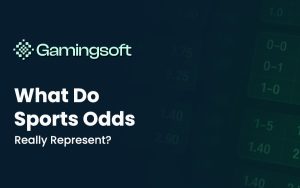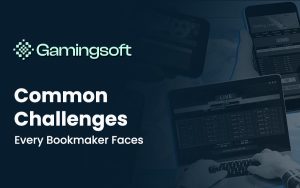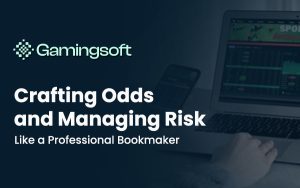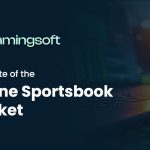If traditional betting is about prediction, in-play trading is about reaction. Once the whistle blows, the market comes alive — odds move every second, influenced by goals, cards, possession, and momentum.
On platforms like Betfair Exchange, this constant motion turns live betting into a financial trading environment — one where smart users buy and sell positions based on probability shifts rather than final results. This is the world of in-play trading, where data meets instinct, and every second counts. In this guide, we’ll explain how in-play trading works, what strategies professionals use, and how you can profit from live market movements without relying on luck.

What Is In-Play Trading on a Betting Exchange?
In-play (or live) trading means placing and adjusting bets during a live match as odds fluctuate in real time. Unlike pre-match betting — where you commit before kickoff — in-play traders buy and sell positions throughout the game.
Because betting exchanges like Betfair allow both back and lay bets, you can:
- Enter the market when odds are favorable,
- Exit before the game ends,
- Lock in guaranteed profits (or minimize losses) — just like stock traders do with shares.
This process is often called “hedging” or “green-booking”, where your profit (or “green”) covers every possible outcome.
Why In-Play Trading Is So Popular
In-play trading combines sports knowledge with market dynamics — offering opportunities that don’t exist in fixed-odds betting.
Key Advantages:
- Constant opportunities — every game minute creates new price movements.
- Control and flexibility — you can enter and exit anytime.
- Profit without predicting outcomes — success depends on timing, not just results.
- Emotion management — traders can minimize losses before the final whistle.
This is why experienced bettors see the exchange as a financial market, not just a betting site.
How Odds Move in Real Time
To trade effectively, you must understand how and why odds move during a match.
Odds reflect the probability of an event happening, constantly updated based on:
- Goals scored
- Red cards or key injuries
- Time remaining
- Momentum shifts (possession, chances created)
- Live trading volume
Example (Football):
Before kickoff, Manchester City are 1.50 to win.
After conceding a goal in the first half, odds jump to 3.00.
If City equalize, they drop again to 1.90.
Every one of these changes creates a trading window — an opportunity to back low, lay high, and profit on volatility.
The Basic In-Play Trading Workflow
Here’s how live trading typically works:
- Pre-Match Research
- Study form, stats, lineups, and match tempo expectations.
- Identify matches where odds are likely to fluctuate (e.g., attacking teams, weak defenses).
- Set Entry Points
- Decide when to back or lay — e.g., after 15 minutes without goals, or if the favorite concedes early.
- Monitor the Market Live
- Watch the game or use reliable live data feeds.
- Observe momentum and trader sentiment shifts.
- Exit or Hedge
- Back or lay the opposite side when odds move in your favor.
- Secure a profit before the game ends — regardless of outcome.
This approach transforms betting into risk-managed trading.
Common In-Play Trading Strategies
Let’s break down the most proven and widely used live trading strategies on Betfair Exchange.
Back Low, Lay Lower (Momentum Trading)
This is a conservative profit-locking approach.
Example:
- You back Manchester United at 2.50.
- They dominate early; odds drop to 1.80.
- You lay United at 1.80, locking in profit regardless of the result.
This is similar to buy low, sell high in finance — except here, you profit from falling odds.
Best For:
Teams likely to dominate early (favorites with strong first halves).
Lay the Draw
One of the oldest and most reliable in-play strategies.
You lay the draw before or during the match, expecting a goal to break it.
Once a team scores, draw odds jump up, allowing you to back the draw at higher odds and lock in profit.
Example:
- You lay the draw at 3.50 with $10.
- A goal is scored, odds rise to 6.00.
- You back the draw at 6.00 for $5.83, securing a profit of ~$4.
Best For:
Leagues with high-scoring matches or aggressive play styles (e.g., Premier League, Serie A).
Laying the Pre-Match Favorite After They Score
Favorites’ odds drop sharply after they score early — often too sharply.
Smart traders lay the favorite after an early goal, expecting an equalizer or momentum swing.
If the other team equalizes or applies pressure, you can back the favorite later at higher odds.
Example:
- You lay Liverpool at 1.40 after they go 1–0 up.
- If opponents equalize, Liverpool’s odds drift to 2.00.
- You back at 2.00 and profit.
Best For:
Games where favorites have shaky defenses or opponents capable of counter-attacking.
Second-Half Comeback Trades
When the underdog trails but is playing well, you can back them in-play at inflated odds.
Example:
- Underdog is 0–1 down at halftime with several chances.
- You back them at odds 10.0.
- If they equalize early in the second half, odds drop to 4.00 — you can lay and secure profit.
Best For:
Tactically balanced matches, where first-half scoreline doesn’t reflect performance.
Over/Under Goals Trading
Live odds in goal markets (e.g., Over 2.5 Goals) react instantly to match tempo.
Example:
- You back Over 2.5 Goals at 2.00 after a quiet 20 minutes.
- A goal comes at 25’, odds fall to 1.40.
- You lay Over 2.5 to secure profit.
Alternatively, you can lay Over 2.5 early, then back later at better odds if the game remains goalless.
Best For:
High-tempo leagues with open play (Bundesliga, Eredivisie).
Tools Every In-Play Trader Needs
Success in in-play trading depends on speed, data, and discipline.
Here’s what professionals rely on:
1. Fast Data Feeds
Use platforms or APIs that update odds instantly (e.g., Betfair API, trading software like Bet Angel or Geeks Toy).
2. Trading Software
These tools allow one-click back/lay, profit calculators, and customizable ladders — essential for quick reactions.
3. Live Match Streams
Even a few seconds’ delay can ruin a trade. Live visuals help anticipate shifts before odds react.
4. Stop-Loss Discipline
Predetermine loss limits — and stick to them. The best traders lose small and win steady.
Reading Market Sentiment Live
Experienced traders don’t just react to odds — they read liquidity and volume.
Signs to watch:
- Heavy unmatched bets at one price → indicates resistance (like support/resistance in stock trading).
- Sudden liquidity drop → a goal or major event is imminent.
- Price compression → traders expect a goal soon.
Understanding these micro-movements separates amateurs from professionals.
Managing Risk in Live Markets
Because odds shift constantly, risk management is everything.
Key Tips:
- Never chase losses — emotional trades kill accounts.
- Avoid overexposure — limit yourself to one or two matches at a time.
- Always calculate liability before laying.
- Use hedging tools — balance your exposure across outcomes.
- Exit early — sometimes a small profit or small loss beats waiting for chaos.
Remember: survival is the foundation of profitability.
Example: Full In-Play Trade Walkthrough
Let’s walk through a real-life example on Betfair Exchange:
Match: Arsenal vs Aston Villa
Pre-Match Odds: Arsenal 1.60, Draw 4.00, Villa 6.00
Step 1 – Pre-Game Setup
You expect a fast start, so you plan to back Arsenal early and trade out if they take control.
Step 2 – Entry
At 10 minutes, Arsenal dominate; you back them at 1.80 for $100.
Step 3 – Odds Movement
At 25 minutes, Arsenal score — odds drop to 1.30.
Step 4 – Exit
You lay Arsenal at 1.30 for $138.46, locking in a $30 guaranteed profit no matter the result.
You’ve just completed a successful in-play trade without waiting for the final whistle.
From a B2B Perspective: Why It Matters
For iGaming platforms and exchange operators, in-play trading isn’t just a player feature — it’s a growth engine.
Business Implications:
- Higher engagement time: Traders stay active throughout matches, not just pre-game.
- Increased liquidity: Every live market movement attracts new entries and exits.
- Advanced analytics potential: AI can predict price volatility and recommend trading signals.
- Cross-platform synergy: Combining sportsbook and exchange data creates unique hybrid products.
In-play trading transforms passive bettors into interactive users — driving retention and profitability.
The Biggest Mistakes to Avoid
Even seasoned traders make errors under pressure. Avoid these traps:
- Trading without watching the game.
- Entering markets with poor liquidity.
- Ignoring commission when calculating profits.
- Leaving trades open too long “hoping” for a turnaround.
- Overreacting to every small event (discipline matters more than speed).
Key Takeaways: The Art of Live Trading
| Principle | Meaning |
| Timing > Prediction | Success depends on reacting smartly, not guessing outcomes. |
| Data + Discipline | Combine analysis with strict emotional control. |
| Profit Early, Exit Early | Don’t chase perfection — secure green books. |
| Liquidity Matters | Trade in active markets with deep price ladders. |
In-play trading rewards those who think in probabilities, not passions.
Conclusion
In-play trading is where sports meets stock market thinking — fast, analytical, and dynamic. It’s not about who wins the match. It’s about who reads the momentum first and manages risk best.
Whether you’re a bettor seeking smarter profits or an operator developing exchange features, mastering in-play trading is the next evolution of iGaming intelligence. Because in the live market, it’s not luck that wins — it’s logic, timing, and discipline.
About Gamingsoft
Gamingsoft is a leading provider of online casino solutions, offering a comprehensive suite of services, including a white-label solution, API integration, payment solutions, game development, and more, to iGaming operators worldwide. With over years of experience, Gamingsoft has earned a reputation for delivering innovative and reliable solutions, helping clients succeed in the competitive iGaming industry.






